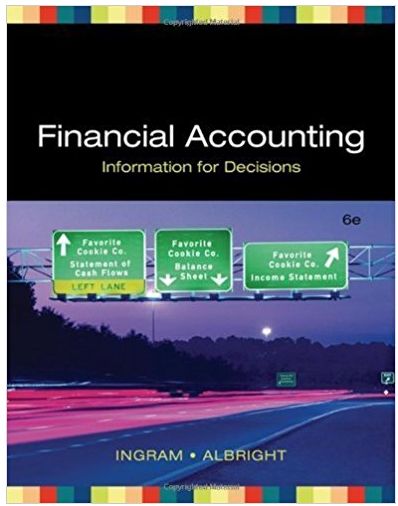Question
Mayson Company produces wooden craft table. The company is completing its fifth year of operations and is preparing to build its master budget for the
Mayson Company produces wooden craft table. The company is completing its fifth year of operations and is preparing to build its master budget for the coming year (2020). The budget will detail each quarters activity and the activity for the year in total. The master budget will be based on the following information: a Unit sales by quarter (for 2020) are projected as follows:
| First-quarter | 60 000 |
| Second quarter | 75 000 |
| Third-quarter | 80 000 |
| Fourth-quarter | 95 000 |
It is expected the sales of the first and second quarter of 2021 will be the same as the fourth quarter of 2020. The selling price is $950 per unit. 50% of sales are cash sales, and 50% are credit sales. Mayson collected 60% of credit sales in the first quarter after the sales, 35% in the following quarter. Allowance for doubtful debts is 5% of credit sales.
The ending finished good inventory is 20% of the following quarter sales. Last year, the selling price and product cost/ unit were $900 and $750 respectively. Mayson uses FIFO inventory costing method.
b Each furniture unit uses four hours of direct labour and six meters of teak wood and a half slab of marble. The cost of teakwood and marble are the same as last year. Workers are paid $25 per hour, and one meter of teak wood costs $80, while one slab of marble costs $600. c At the end of each quarter, Mayson plans to have 30% of the teak wood and marble needed for next quarters unit production.
- Mayson buys teak wood and marble on the account. Half of the purchases are paid for in the quarter of acquisition, and the remaining half is paid for in the following quarter. Wages and salaries are paid on the 15th and 30th of each month.
- Fixed overhead totals $500 000 each quarter. Of this total, $250 000 represents plant and equipment depreciation. All other fixed expenses are paid for in cash in the quarter incurred. The fixed overhead rate is computed by dividing the years total fixed overhead by the total labour hours needed for
the year.
- Variable overhead is budgeted at $10 per direct labour hour. All variable overhead expenses are paid for in the quarter incurred.
- Fixed selling and administrative expenses total $50 000 per quarter, including $5 000 depreciation. h Variable selling and administrative expenses are budgeted at $10 per unit sold.
All selling and administrative expenses are paid for in the quarter incurred.
i The balance sheet as at 31 December 2019 is as follows:
| ASSETS |
|
| Cash | $ 250 000 |
| Direct materials inventory | 14 742 000 |
| Inventory Finished good | 9 000 000 |
| Accounts receivable, net | 3 300 000 |
| Plant and equipment, net | 33 500 000 |
| Total assets | $60 792 000 |
| LIABILITIES AND SHAREHOLDERS EQUITY | |
| Accounts payable | $ 7 371 000* |
| Capital share | 25 571,000 |
| Retained earnings | 27 850 000 |
| Total liabilities and shareholders equity | $60 792 000 |
* For purchase of direct materials only.
The ending balance of Account receivable will be paid in the first quarter of 2020.
- Mayson will pay quarterly dividends of $500 000. At the end of the third quarter, $200,000 of equipment will be purchased and paid in cash. This equipment is estimated to have five years of useful life, and Mason applies the straight-line depreciation method. After five years, it is estimated that the equipment can be sold for $5,000
- Mayson maintains a 12% open line of credit for $20 000 000. Interests are paid at the end of each quarter. Mayson maintains a minimum cash balance of $200,000. The company borrows on the first day of the quarter and repays loans on the last day of the quarter, both in multiples of $ 100,000.
- The tax rate is 30%.
REQUIRED:
Prepare a master budget for Mayson Company for each quarter of 2020 and for the year in total. The following component budgets must be included:
- Overhead budget
- Selling and administrative expenses budget
- Ending finished goods inventory budget
- Cost of goods sold budget (Note: Assume that there is no change in work in process inventories)
Step by Step Solution
There are 3 Steps involved in it
Step: 1

Get Instant Access with AI-Powered Solutions
See step-by-step solutions with expert insights and AI powered tools for academic success
Step: 2

Step: 3

Ace Your Homework with AI
Get the answers you need in no time with our AI-driven, step-by-step assistance
Get Started


